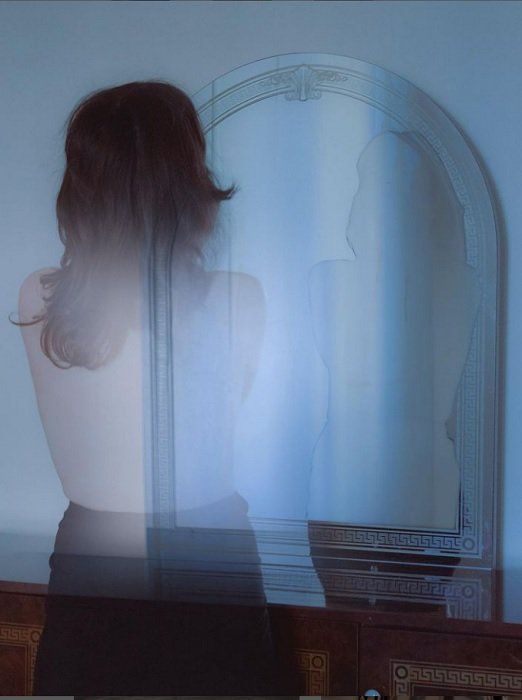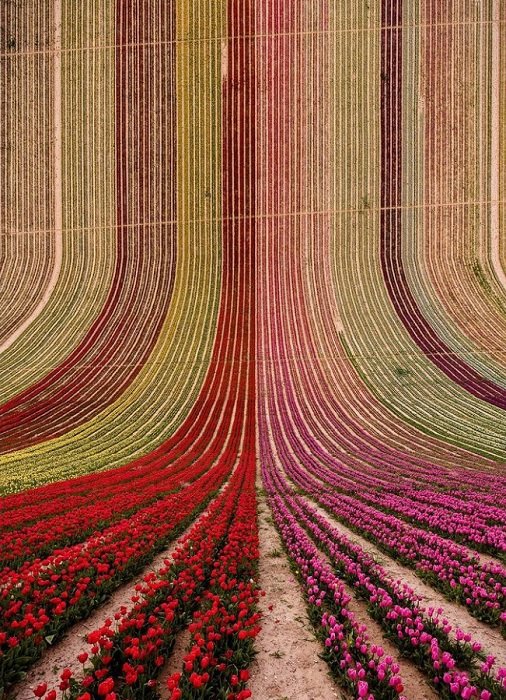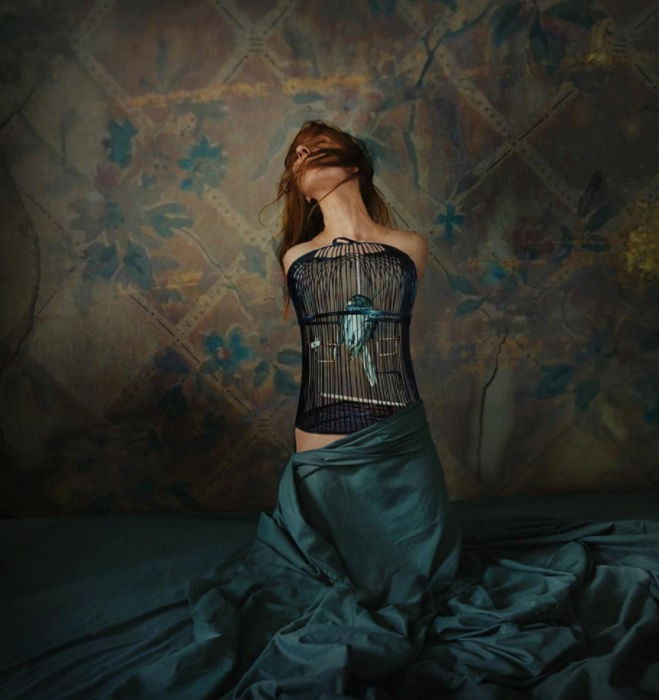Surreal photography challenges its admirers to change their perspectives, question their values, and create something unforgettable. This unique genre has inspired many photographers to recreate their wildest dreams.
In this article, we have 14 of the best examples of surreal photography from some of the finest surrealist artists. Their work will help you break the shackles of a stale imagination, and redefine the possibilities of photography.

What is Surreal Photography?
The artistic movement of surrealism was a phoenix born of the ashes of the First World War. Once peace broke out, European artists fought to break away from the intense realism of war. They tore down the absolutes of reality and reconstructed the world using elements of dream and pure imagination.
Two of the earliest surrealist artists were Salvador Dali and Rene Magritte, who were painters. But surrealism also found appeal with writers, playwrights, and photographers.
The early surrealist photographers were Lee Miller, Man Ray, and John Havinden. They used practical techniques to create images that question the confines of reality. Techniques like forced perspective and double exposure. And they used darkroom tricks for primitive editing.
Surrealist photography lives on. And modern technology means there are more opportunities for creating surrealist photography. You can use in-camera and post-production editing techniques to subvert the world we perceive as real.

14 Surreal Photography Ideas to Inspire You
Here are some of the finest examples of surrealist photography. Through the work of these excellent artists, we’ll explore the techniques for creating stunning surrealist photographs.
1. Go Under Water For Dreamlike Portraits
The underwater world is a dreamlike environment. It’s a warped reality where things move slowly, and sounds are soft and muffled. The body and senses don’t react with the same urgency as when you’re on dry land. This makes it an excellent environment for surreal images.
Velizar Ivanov has created incredible underwater portraits of his daughter. The girl appears weightless, with her dress and hair floating in the water. And the light reacts with the water to create a haze, creating a dreamy atmosphere. The girl’s constant gaze is the only thing that keeps the view grounded in reality.

2. Find Surreal Landscapes Beneath The Waves
From Twenty Thousand Leagues Under the Sea to The Abyss, the world beneath the waves has been a source of intrigue and inspiration for many artists. It’s a mysterious environment that’s full of surprises. In fact, we know more about the Moon’s surface than we do about the bottom of the ocean.
This is why underwater photography is naturally surreal. The landscape and its inhabitants are far removed from those above the surface. The physics are entirely different. And the deeper you go, the weirder it gets.
The work of Alexandra Rose is a testament to that. The scenes she captures are unfamiliar, mysterious, and beautiful. Her surreal images come from her skill as an underwater photographer.

3. Remove Faces for Surreal Portraits
Our faces are our primary source of identity. The face states who we are more than our name or our Spotify playlists. With the face, we recognise others and ourselves. And the glance of an eye or the movement of the lips can communicate more than words.
The face is often the focus of surrealist images. If our face is changed or removed, we lose our identity. It can be the thing of nightmares. But it’s also the reality for many as they feel anonymous even in a crowded city.
Anna Maghradze uses Photoshop techniques to explore the feeling of disappearing. By showing this metaphysical concept, she creates fabulous surreal pictures. She uses surreal portraits to portray the isolation of a lonely mind in her photo collages.

4. Play With Your Food for Surreal Food Photography
Food photography and surrealism aren’t often thought of as suitable bedfellows. The usual aim of food photography is to make the subject look as mouthwatering as possible. It’s a genre with its feet firmly based in reality.
But that is why food photography is ripe for a surrealist approach. A surrealist photographer, like Elijah O’Donnell, can manipulate our expectations. A humdrum apple becomes something distorted and different with a few visual tweaks.
O’Donnell is using a surreal image to send a message. This surreal photo makes us question our eating habits. And it highlights the toxic processes of modern food production.

5. Explore Character Depth with Blacklight Photography
Surreal photography explores the person beyond and beneath our physical selves. We hide aspects of ourselves from others and ourselves. No person is merely two-dimensional.
Blacklight photography is a technique used to explore this concept. The glow of the paints illuminates the subjects in unnatural ways. Surreal photographers, like Danilo Batista, use blacklight to expose the hidden personas of their subjects. The results are surreal portraits that combine the physical and spiritual worlds.

6. Resize and Relocate Familiar Objects
We are comfortable being the size we are. We’re much smaller than the sun or the moon. But we’re far bigger than insects that live under stones and logs. We’re comfortable with the natural order of things.
Changing this natural order is a common surreal photography technique. Making the large small feels like we can control or influence the things we have no power over. And if the small becomes large, we lose control of them.
Anya Anti explores these surreal photography ideas in her work. Anya uses surreal photography to tell stories and create fairy tales. In the example below, her subject has bound and chained the moon, which she drags at her heels. The moon is in her possession, and something that was for all now only belongs to her.

7. Resize Yourself to Explore New Worlds
As well as manipulating the world around us, we can change ourselves. We can grow larger or smaller, allowing us to interact with our environment in a whole new way.
Joel Robison explores this idea in his surreal photography. He’s a self-portrait artist that explores the world as a miniature human. When he’s in his shrunken form, familiar objects take on new meaning. And he can interact with them in previously impossible ways.
Joel uses these surreal photography ideas as a way of telling stories. He gives a new perspective and takes the viewer on a journey with him. His self-portraits are made of pure daydreams and imagination. He combines self-portrait photography and digital image manipulation techniques, creating surreal photos that are full of magic.

8. Change the World for a Warped Perspective
The world is round. And this limits how far we can see when we’re standing on the ground. Even on flat land, we can only see so far. This is nothing strange. It’s what we expect. We’d be more shocked if this perspective were to change.
Aydin Buyuktas uses surrealist photography to explore this very idea. He manipulates his landscape photos, so it appears the earth is curving in the opposite direction. It curves up into until vertical, making the viewer feel unstable and off-balance. It’s as if the world is folding in on itself.
Changing the world in this way plays with our fears of being small and powerless against the planet we’re on. Surrealist pictures like those from Aydin remind us of earthquakes and tsunamis. But the world-changing shape is a powerful idea from a surrealist photographer.

9. Distort Vision with Motion Blur
A simple distortion of what we see can create a sense of warped reality. My mind can tell us we’re looking at something completely different, or it can change friend into foe.
Motion blur is a classic surreal photography technique still being used today. You can add it in post-production. But you can also use your camera to capture the effect. It’s created by using a slow shutter speed on a fast-moving object.
Ryan Muirhead is a film photographer who still uses analog camera techniques to create surreal images. Much of his work is dark as he leans into the horror genre. His surreal photos are twisted and eerie, evoking the nightmares we can’t quite remember.

10. Experiment with Forced Perspective
Humans have some of the best eyes in the animal kingdom. But the world can still play tricks on us, and things are not always as they seem. Perspective is one area of our vision that can be fooled and exploited.
Forced perspective is where you change the size or position of an object to make it seem closer or further away. The changed size or distance always needs to be in relation to something else. You’re changing the object’s relationship to everything around it, so everything seems to be correct in our vision.
Surrealist photographers have been using perspective techniques for decades. And it has played a large part in the cinematography of the Lord of The Rings films. The various sizes of the characters had to be in proportion with one another for the viewer.
Photographer and cinematographer Muhammed Ali Arslen uses this technique when constructing his surreal photography. He understands how we see the world through a lens, and he plays tricks with us.

11. Remove Distractions for Surreal Minimalism
The real world is full of stuff. Our houses are cluttered with things we need and don’t need. And we look out our windows to see even more things, whether they’re skyscrapers, houses, or trees. There’s always something.
Our lives are so cluttered nothingness becomes a surreal idea. Some people dream of nothingness, longing for isolation and silence. For others, it’s their worst nightmare. It can be seen as a blank canvas or an empty void.
In the photo below, Emile Seguin casts an isolated figure alone in a world of blankness. It’s a surreal landscape of pure white, only broken by the lonely walker. There’s no break between land and sky. It’s a surrealist image of infinite scope.

12. Transform The Human Body for Surreal Subjects
We could go down a philosophy rabbit hole and discuss whether the body is part of who we are or merely a vessel for the self. But either way, a transformed body is an image that can move us. And it can move us all the more when it’s transformed in a surreal way.
Changes to our bodies can cause physical pain, which is why we’re precious about our bodies. But surrealist artists change the body to explore the emotional pain and how it makes us feel.
Brooke Shaden explores these themes in her surreal photography work. In the self-portrait below, her torso is replaced by a dead bird in a cage. It’s a symbolic representation of her emotional pain, the severity of which has transformed her physical vessel. Brooke is a surrealist photographer who expresses the metaphysical through the physical.

13. Tear Down the Fabric of Reality
The art of surrealism is about tearing down reality so it can be re-imagined with an infinite scope of possibilities. And with surreal photography, pry apart the seams in the fabric of reality. A realist photographer can look at what the world is made of, deconstructing as they go.
Platon Yurich gives us some excellent surreal photography examples that do exactly that. It transforms reality into a stage. It’s a stage that’s been dressed with scenery and props. All of which can be changed and moved. It’s a behind-the-scenes video sprinkled with the magic of childish wonder.

14. Create Portals to Other Worlds
Surrealism isn’t always about changing our world. Sometimes, it’s about finding a way to move between different dimensions. Many artists allow the viewer to imagine they can move from reality to reality or from dream to dream.
Portals have been an element of surrealism for decades, influencing surreal artists in science fiction and fantasy. They’re an escape, and they’re a trap.
Charlie Davoli imagines a reality with multiple dimensions, which he explores in his surreal photos. His images follow surreal ideas, like a space-time continuum that can be manipulated for ease of travel.

Conclusion
Since the 1920s, surrealism has been astounding people all over the world. Back then, only a select few could experiment with it. Now, anyone with a camera can recreate their wildest dreams. This opportunity has allowed millions of artists to express their deepest fears, emotions, and secrets. For this reason, surreal photography isn’t going anywhere.
The surreal photographers featured above have shown how surreal ideas can be expressed with a camera and some photo editing software. From stylised compositions to traditional camera methods, there are surreal photography techniques everyone can try.
If you have a dream, you have every right to turn it into a masterpiece. Why not start now?
Learn how to construct Fantastic Photo Adventures for your own adventure into surreal photography with our eBook from Joel Robison!









